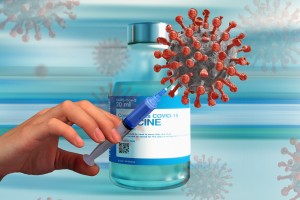
Geneva: Since the June 22, 2021 update, phase 3 trial results for Bharat-Covaxin (not yet peer-reviewed) have been made available, the World Health Organisation stated. It said this double-blind, randomized control trial included 25 798 participants aged 18 years and older, randomized to receive two doses of the vaccine or a placebo with 4 weeks in between doses. Overall vaccine efficacy against severe and symptomatic disease ≥ 14 days post second dose was 93.4% (95% CI: 57.1-99.8%) and 77.8% (65.2-86.4%), respectively. Among 130 SARS-CoV-2 positive samples, 79 (60.8%) were genotyped. VE against Delta symptomatic disease (65.2% (33.1-83.0%)) was lower than other typed variants; 90.1% (30.4-99.8%) against Kappa (B.1.617.1), and 73.0% (-2.2-95.2%) against all other variants, although numbers were small with overlapping confidence intervals.
VOC impacts on vaccines
Meanwhile, the WHO said four new studies (not yet peer reviewed) have evaluated the ability of vaccine sera to neutralize the Delta variant. While these four studies found relatively modest reductions in neutralization of the Delta variant by AstraZeneca-Vaxzevria (4.0-fold reduction), SII-Covishield (3.2-fold reduction), Moderna-mRNA-1273 (2.1-fold reduction), and Janssen-Ad26.COV 2.5 (1.6-fold reduction) relative to the reference strain, a larger reduction was found for the Pfizer BioNTech-Comirnaty (11.3-fold reduction) in one of the studies.
To date, five studies have evaluated neutralization of the Delta variant by Pfizer BioNTech-Comirnaty and report fold- reductions ranging from 1.4 to 11.3; two studies evaluating AstraZeneca-Vaxzevria have both reported an approximate 4-fold reduction; and single studies have found ~2-3-fold reductions by sera from individuals who had received Janssen-Ad26.COV 2.5, Moderna-mRNA-1273, Bharat-Covaxin, and SII-Covishield vaccines.
A test-negative case-control study in Ontario, Canada (not yet peer reviewed) assessed the effectiveness against variants of concern among 421 073 individuals aged 16 years and older, who were tested for SARS- CoV-2. The authors used a combination of whole genome sequencing and mutation screening by PCR to classify Variants of Concern (VOC).
Vaccine efficacy/effectiveness (VE) of two doses of both Pfizer BioNTech-Comirnaty and Moderna-mRNA-1273 against symptomatic disease ≥ 7 days post final dose was measured. VE for Pfizer BioNTech-Comirnaty was 93% (95% CI: 88-96%), 89% (86-91%), 84% (69-92%), and 87% (64-95%) against non-VOC, Alpha, Beta/Gamma, and Delta variants, respectively.
VE of Moderna-mRNA-1273 was 92% (86-96%) against Alpha as compared to 89% (65-96%) against non-VOC (VE against Beta/Gamma and Delta not measured). A single dose of AstraZeneca-Vaxzevria resulted in a VE of 64-67% for non-VOC, Alpha and Delta, and a VE of 48% against Beta/Gamma.
Two dose VE estimates for AstraZeneca-Vaxzevria were not provided due to insufficient numbers.
The study also found two doses of Pfizer BioNTech-Comirnaty and Moderna-mRNA-1273 vaccines to provide very good protection against hospitalization or death due to Alpha and non-VOC (VE estimates of 94-96%), and two doses of Pfizer BioNTech-Comirnaty also had high VE against Beta/Gamma (95%); no data for Moderna-mRNA-1273 against Beta/Gamma. A single dose of Pfizer BioNTech-Comirnaty, Moderna- mRNA-1273 and AstraZeneca-Vaxzevria prevented 78%, 96% and 88% of hospitalizations/deaths due to Delta, respectively.
Another study (not yet peer-reviewed) reported on the effectiveness of Sinovac-CoronaVac in Manaus, Brazil, during a time when the predominant circulating strain was Gamma (86% of genotyped SARS-CoV-2 were the Gamma variant during the peak of the epidemic in Manaus). The study used a test-negative case-control design to estimate VE among ~400 case-control pairs of health care workers. VE of two doses of the vaccine against symptomatic disease and against infection 14+ days post final dose was 36.8% (95%: CI -54.9- 74.2%) and 37.9% (95% CI: -46.4 to 73.6%), respectively. Authors note the low VE estimate likely reflect a bias towards the null hypothesis as suggested by the finding that vaccinated individuals were much more likely to be infected than unvaccinated individuals in the period 0-13 days after receipt of the first dose (aOR 2.11, 95% CI 1.36-3.27). Authors also note that the analysis may have been underpowered to be able to detect a VE of lower than 70%.
– global bihari bureau





